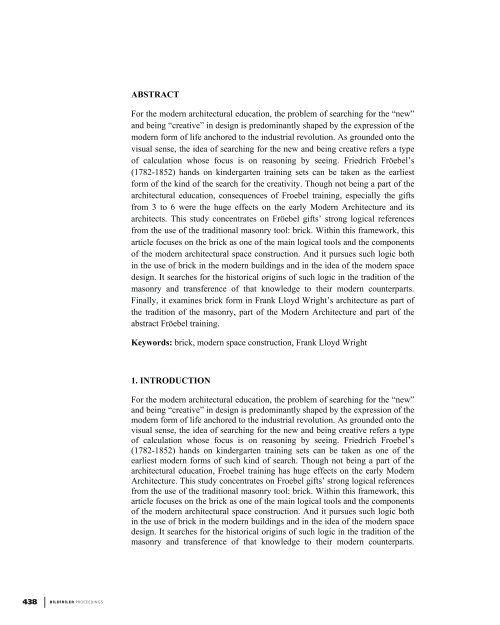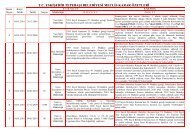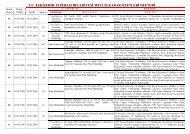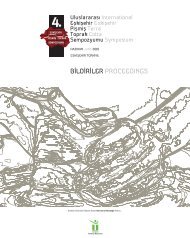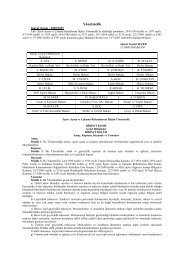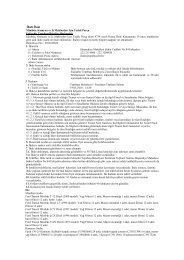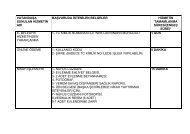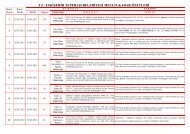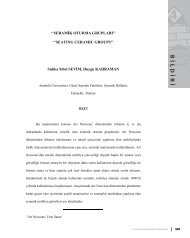Bildiri Kitabı - Kitap3
Bildiri Kitabı - Kitap3
Bildiri Kitabı - Kitap3
Create successful ePaper yourself
Turn your PDF publications into a flip-book with our unique Google optimized e-Paper software.
ABSTRACT<br />
For the modern architectural education, the problem of searching for the “new”<br />
and being “creative” in design is predominantly shaped by the expression of the<br />
modern form of life anchored to the industrial revolution. As grounded onto the<br />
visual sense, the idea of searching for the new and being creative refers a type<br />
of calculation whose focus is on reasoning by seeing. Friedrich Fröebel’s<br />
(1782-1852) hands on kindergarten training sets can be taken as the earliest<br />
form of the kind of the search for the creativity. Though not being a part of the<br />
architectural education, consequences of Froebel training, especially the gifts<br />
from 3 to 6 were the huge effects on the early Modern Architecture and its<br />
architects. This study concentrates on Fröebel gifts’ strong logical references<br />
from the use of the traditional masonry tool: brick. Within this framework, this<br />
article focuses on the brick as one of the main logical tools and the components<br />
of the modern architectural space construction. And it pursues such logic both<br />
in the use of brick in the modern buildings and in the idea of the modern space<br />
design. It searches for the historical origins of such logic in the tradition of the<br />
masonry and transference of that knowledge to their modern counterparts.<br />
Finally, it examines brick form in Frank Lloyd Wright’s architecture as part of<br />
the tradition of the masonry, part of the Modern Architecture and part of the<br />
abstract Fröebel training.<br />
Keywords: brick, modern space construction, Frank Lloyd Wright<br />
1. INTRODUCTION<br />
For the modern architectural education, the problem of searching for the “new”<br />
and being “creative” in design is predominantly shaped by the expression of the<br />
modern form of life anchored to the industrial revolution. As grounded onto the<br />
visual sense, the idea of searching for the new and being creative refers a type<br />
of calculation whose focus is on reasoning by seeing. Friedrich Froebel’s<br />
(1782-1852) hands on kindergarten training sets can be taken as one of the<br />
earliest modern forms of such kind of search. Though not being a part of the<br />
architectural education, Froebel training has huge effects on the early Modern<br />
Architecture. This study concentrates on Froebel gifts’ strong logical references<br />
from the use of the traditional masonry tool: brick. Within this framework, this<br />
article focuses on the brick as one of the main logical tools and the components<br />
of the modern architectural space construction. And it pursues such logic both<br />
in the use of brick in the modern buildings and in the idea of the modern space<br />
design. It searches for the historical origins of such logic in the tradition of the<br />
masonry and transference of that knowledge to their modern counterparts.<br />
<br />
2 <br />
438<br />
BİLDİRİLER PROCEEDINGS


